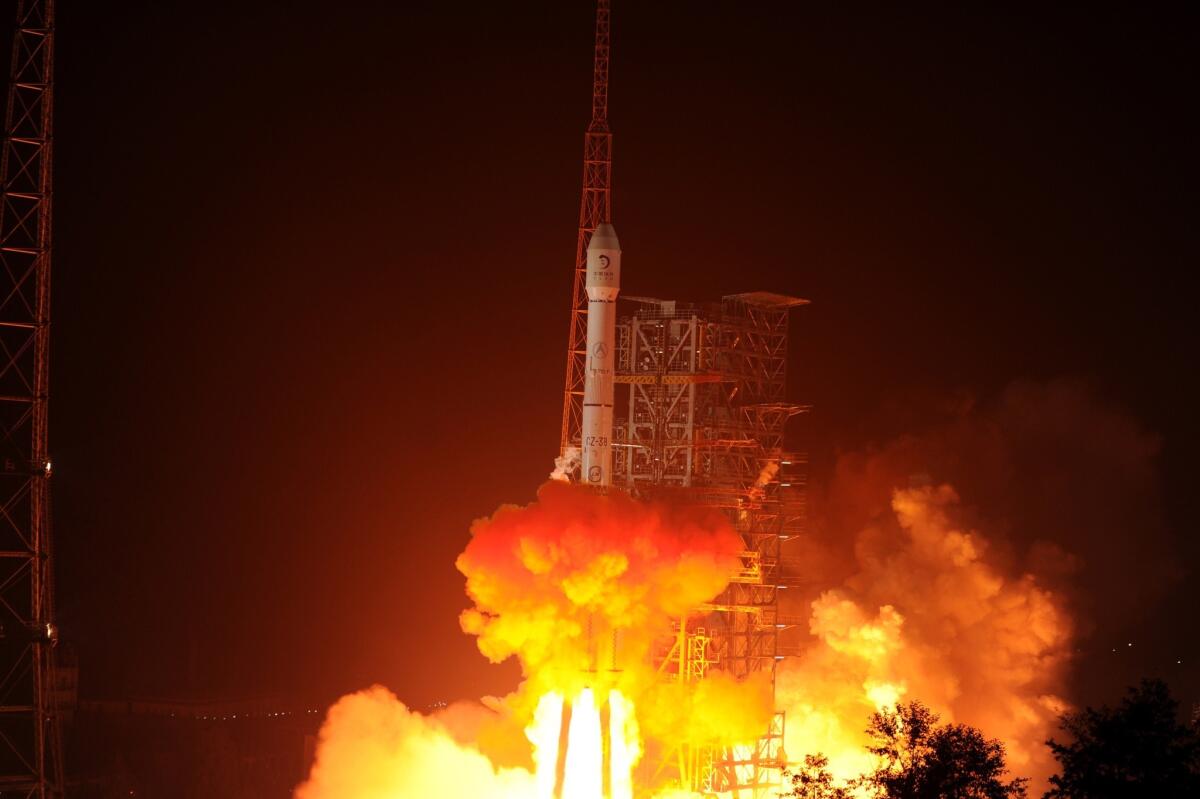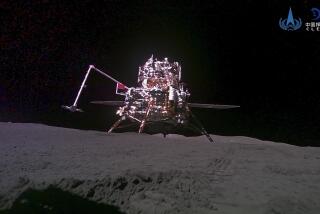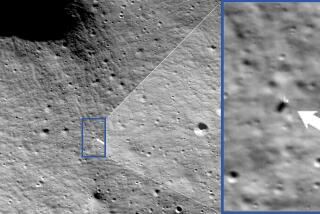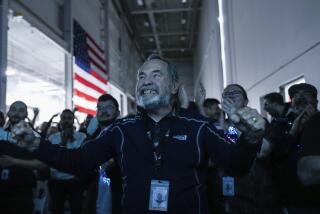China launches rocket with its first moon lander and rover

- Share via
BEIJING--In hopes of ensuring that the next man on the moon is Chinese, Beijing launched a rocket carrying a buggy-like vehicle that is expected to roam and explore the moon’s surface for three months.
The Long March rocket lifted off from the Xichang Satellite Launch Center in Sichuan Province at 1:30 a.m. Monday, Beijing time (9:30 a.m. PST Sunday), the official Xinhua news agency reported.
If all goes as planned, a landing vehicle and the roving vehicle will touch down on the moon’s surface in about two weeks. It will be the first time that anybody has done a soft landing (one in which the vehicle remains intact) on the moon since 1976, when the Soviet Union landed the Luna 24 probe.
The unmanned rover is a gold-colored vehicle that looks like a dune buggy. It is expected to conduct various scientific experiments such as planting a telescope on the moon’s surface and exploring under the surface of the moon, as well as transmitting photographs back to Earth.
The real purpose, aerospace experts believe, is to practice the techniques to eventually put a man on the moon.
“It comes at a time when America is dithering. Russia has lost the plot a bit. China sees the possibility of leading,” said David Whitehouse, a British astrophysicist who has written a book about the moon. “It will upset the Americans because the Americans think they own the moon.”
For domestic audiences, the propaganda value is huge and Chinese media are playing it to the hilt. Even the name of the rover, Jade Rabbit, was selected by a public poll. The name refers to the pet rabbit of the Chinese moon goddess, Chang’e – which is the name of the landing vehicle as well. Two previous Chang’e missions orbited the moon in 2007 and 2010.
The rocket launch was broadcast live on Chinese television, although viewership was reduced by the early-morning timing.
“The timing is dictated more by physics than by propaganda,” said Morris Jones, an Australian space analyst. He said that while the launch itself was relatively uncomplicated, as is the task of getting into orbit around the moon – something China has already done twice – the landing could be more difficult.
“Landing on the moon is far trickier than simply going into orbit. There is no margin for error,” he said.
China’s state news service described the mission as the “most complicated and difficult task in China’s space exploration.”
“More than 80% of the technologies adopted in the mission are new,” Wu Zhijian, spokesman with State Administration of Science, Technology and Industry for National Defense, told the news service last week.
Only the United States and the Soviet Union have successfully landed on the moon in the past. The U.S. is the only nation to land people on the moon.
Moon exploration enthusiasts are eagerly waiting to learn what the Chinese mission will uncover.
Since the burst of moon exploration in the 1960s and 1970s, particularly the 1969 landing by Neil Armstrong and Buzz Aldrin, the moon’s appeal has waned in favor of the planets and asteroids. In 2010, President Obama axed plans for the Constellation program that was supposed to return Americans to the moon by 2020.
“People wanted to explore the planets. We wanted to see more distant worlds,” said Jones. “But even though there was so much exploration of the moon in the 1960s and the 1970s, in recent years, we have found out things about the moon we never suspected when astronauts went there. We have found areas where there is water ice and regions colder than Pluto. There are still many surprises.”
ALSO:
Israeli Arabs, Palestinians protest plan to relocate Bedouins
New unrest hits Cairo as protesters denounce student killing
Veteran’s detention in North Korea highlights wartime guerrilla unit
More to Read
Sign up for Essential California
The most important California stories and recommendations in your inbox every morning.
You may occasionally receive promotional content from the Los Angeles Times.










